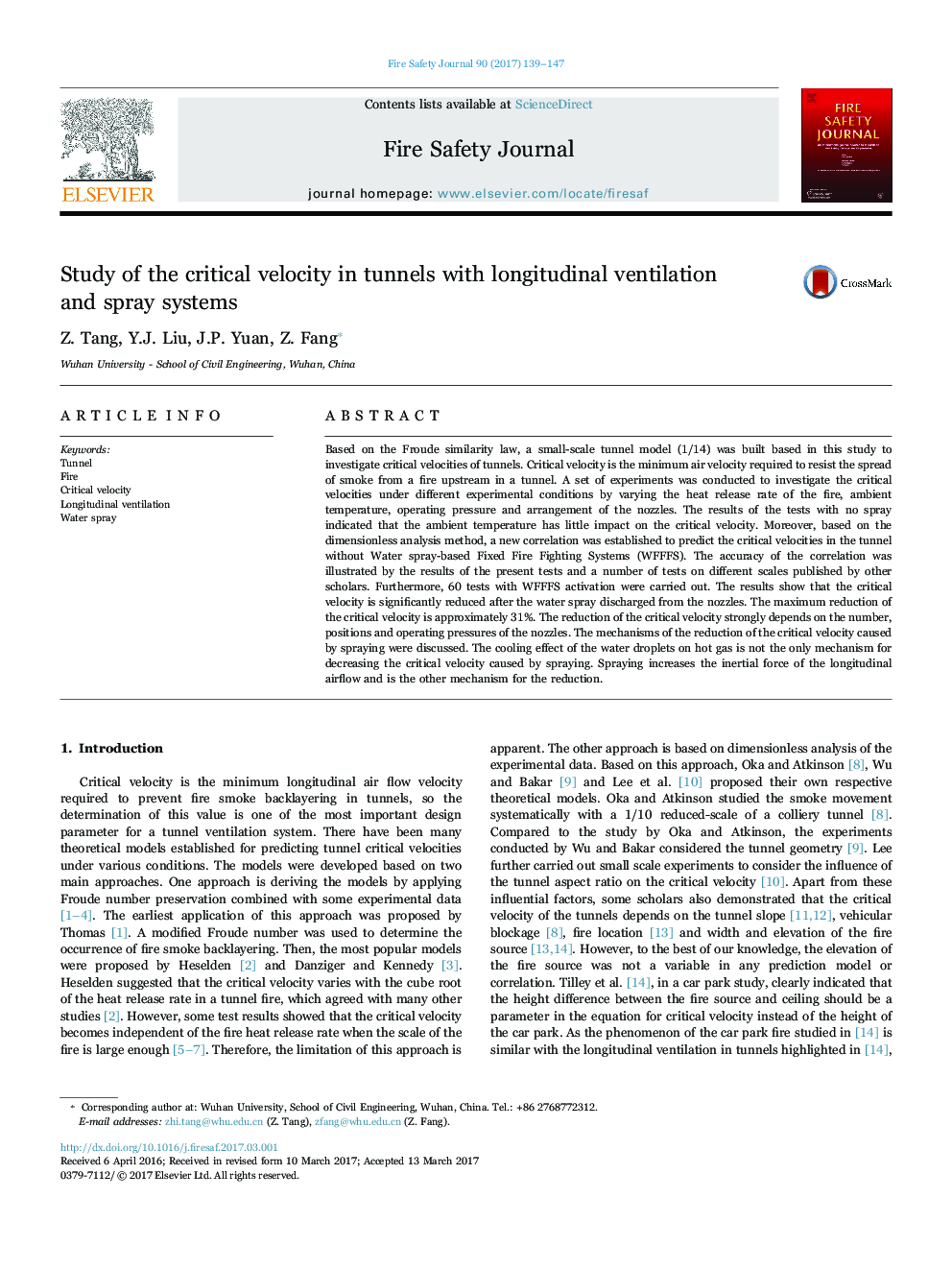| کد مقاله | کد نشریه | سال انتشار | مقاله انگلیسی | نسخه تمام متن |
|---|---|---|---|---|
| 4920864 | 1429213 | 2017 | 9 صفحه PDF | دانلود رایگان |
عنوان انگلیسی مقاله ISI
Study of the critical velocity in tunnels with longitudinal ventilation and spray systems
ترجمه فارسی عنوان
بررسی سرعت بحرانی در تونل هایی با سیستم های تهویه و سیستم های اسپری
دانلود مقاله + سفارش ترجمه
دانلود مقاله ISI انگلیسی
رایگان برای ایرانیان
کلمات کلیدی
تونل، آتش، سرعت بحرانی، تهویه طولی، اسپری آب،
موضوعات مرتبط
مهندسی و علوم پایه
سایر رشته های مهندسی
مهندسی عمران و سازه
چکیده انگلیسی
Based on the Froude similarity law, a small-scale tunnel model (1/14) was built based in this study to investigate critical velocities of tunnels. Critical velocity is the minimum air velocity required to resist the spread of smoke from a fire upstream in a tunnel. A set of experiments was conducted to investigate the critical velocities under different experimental conditions by varying the heat release rate of the fire, ambient temperature, operating pressure and arrangement of the nozzles. The results of the tests with no spray indicated that the ambient temperature has little impact on the critical velocity. Moreover, based on the dimensionless analysis method, a new correlation was established to predict the critical velocities in the tunnel without Water spray-based Fixed Fire Fighting Systems (WFFFS). The accuracy of the correlation was illustrated by the results of the present tests and a number of tests on different scales published by other scholars. Furthermore, 60 tests with WFFFS activation were carried out. The results show that the critical velocity is significantly reduced after the water spray discharged from the nozzles. The maximum reduction of the critical velocity is approximately 31%. The reduction of the critical velocity strongly depends on the number, positions and operating pressures of the nozzles. The mechanisms of the reduction of the critical velocity caused by spraying were discussed. The cooling effect of the water droplets on hot gas is not the only mechanism for decreasing the critical velocity caused by spraying. Spraying increases the inertial force of the longitudinal airflow and is the other mechanism for the reduction.
ناشر
Database: Elsevier - ScienceDirect (ساینس دایرکت)
Journal: Fire Safety Journal - Volume 90, June 2017, Pages 139-147
Journal: Fire Safety Journal - Volume 90, June 2017, Pages 139-147
نویسندگان
Z. Tang, Y.J. Liu, J.P. Yuan, Z. Fang,
